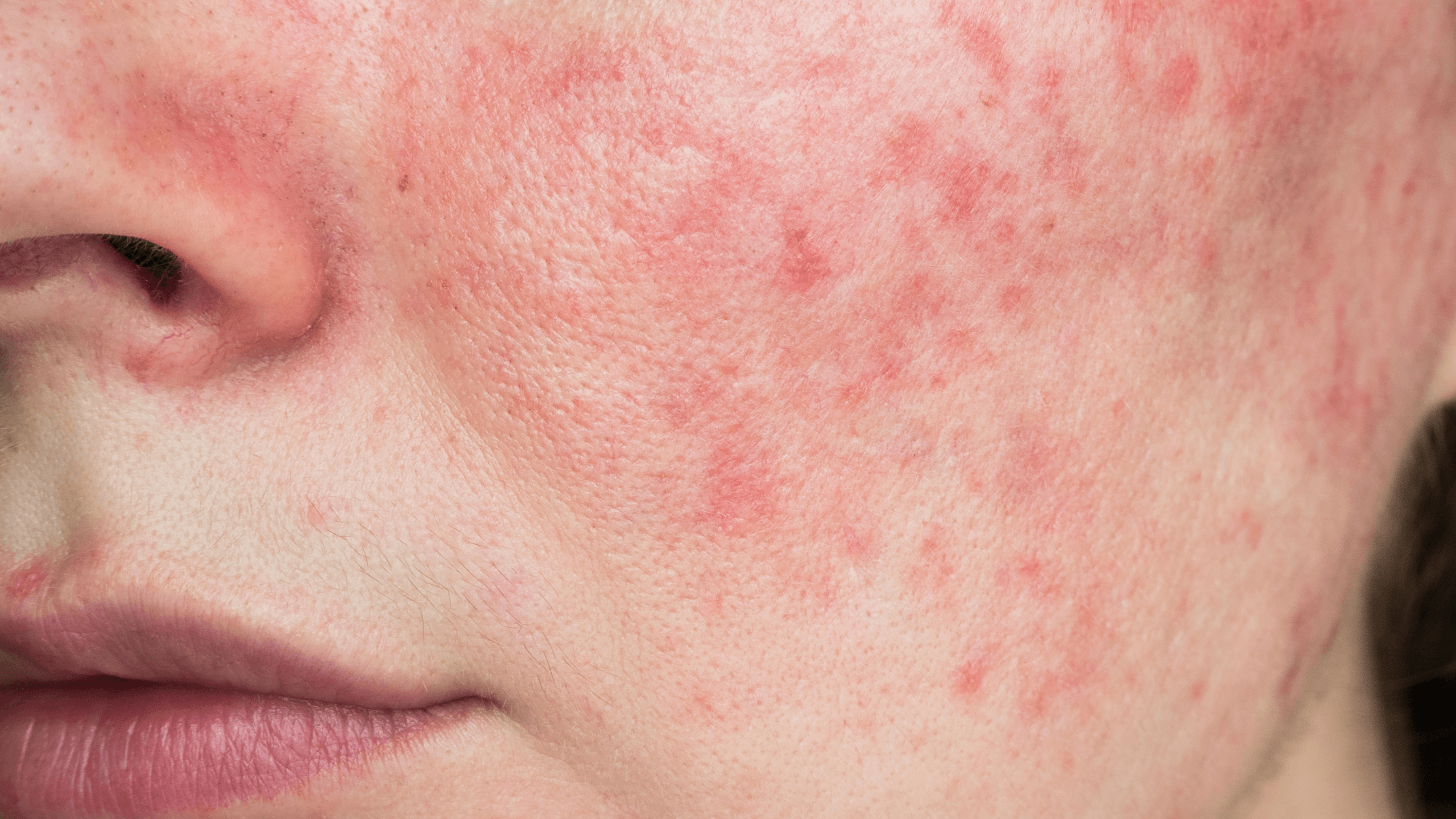Does it feel like facial redness just showed up overnight? It can be a frustrating and confusing experience that leads to self-consciousness. More often than not, your facial redness didn’t just show up out of the blue. And getting to the bottom of it will help you develop an effective treatment plan that gets you feeling good in your skin again in no time.
Facial redness can affect anyone, and it’s one of the most common complaints dermatologists address each year. So if you’re experiencing persistent facial redness, flushing or other rosacea symptoms, you’re not alone. Let’s uncover eight of the potential causes of facial redness:
8 Possible Causes of Facial Redness
1. Environmental and Lifestyle Factors
External environmental factors can trigger a rosacea flare. Hot or cold weather, wind, strenuous exercise, and physical exertion are all common environmental rosacea triggers.
Possible lifestyle triggers include:
- Emotional stress
- Taking certain medications, including some blood pressure medicines
- Alcohol
- Spicy foods
- Dairy and other inflammatory foods
Generally speaking, once you can pinpoint some of your personal triggers (because they’re different for everyone!), you can eliminate them and see how it impacts your skin Oftentimes, that’s only one step to managing facial redness, though. Keep reading to learn more about other contributing causes!
2. Irritation from Harsh Skincare Ingredients
Redness that appears or worsens after using topical products may be a sign that one of the ingredients is irritating your skin. While not all bad, the following ingredients can be harsher on the skin and contribute to facial redness:
- Glycolic acid
- Salicylic acid
- Witch hazel
- Menthol or peppermint oil
- Synthetic fragrances
- Alcohols
- Parabens
Make sure to check for these ingredients in your hair products too, as hair products come into contact with the skin and can also trigger a flare-up.
3. Poor Gut Health
Research shows that almost half of people with rosacea also have small intestinal bacterial overgrowth (or SIBO). Coincidence? Nope. After receiving treatment for SIBO, 90% of people saw significant or complete reduction of their rosacea symptoms.
There’s a reason over 2,000 years ago Hippocrates said, “All disease begins in the gut.” It’s a central hub for health, and your gut health is reflected in your entire body, including your skin.
4. Imbalanced Skin Microbiome
Just like your gut microbiome is home to trillions of bacteria, your skin also has a microbiome of its own! The skin microbiome is made up of both bad and good bacteria. When the number of bad bacteria overpowers the good, it throws off the delicate balance of the microbiome and can contribute to facial redness.
Simple things like over-cleansing, over-exfoliating, and using products with irritating ingredients can all disrupt the balance of your skin microbiome.
Gladskin Redness Relief Cream reduces the appearance of facial redness as it moisturizes. We’ve harnessed the power of our patented smart protein Micreobalance® to create an innovative cream that restores bacterial balance to your skin microbiome. Plus it’s minimally formulated and fragrance-free.
Learn more about Gladskin Redness Relief.
5. Skin Mites
Don’t worry! Skin mites sound a lot scarier than they are. Demodex mites are found on all human skin. They’re a natural part of the microbiome! Demodex folliculorum live in the hair follicles, mainly on the face, and in the meibomian glands of the eyelids. Demodex brevis live in the sebaceous glands of the skin.
Research shows that an increased number of Demodex folliculorum are found in people with rosacea-prone skin. Demodex are thought to contribute to an immune response that causes inflammation, leading to facial redness.
6. Genetics
It’s true. Research shows your genes may play a role in facial redness. Many people with rosacea have family members that also struggle with the skin condition. One study determined two areas of the genome are associated with the presence of rosacea. Interestingly, they are located near genes involved in the role of inflammation and autoimmune diseases.
7. Dryness
Whether from dry air, overwashing, excess sun exposure, drying ingredients in topical products, chlorine, or any other factor, dry skin on your face can leave you looking flushed. Luckily in most cases, dryness is easy to combat with an effective moisturizer. Keeping your skin hydrated is a critical part of skin health. That’s why providing moisture back to the skin was one of our key concerns when formulating GladSkin Redness Relief Cream. You get effective moisture without preservatives, sulfates, parabens, or fragrances. Just healthy moisture! Learn more here.
8. Inflammation
At the root of many of these facial redness causes is inflammation. Short-term (or acute) inflammation is healthy; it’s your body’s natural process of trying to protect itself. However, long-term inflammation as a result of an imbalance in the skin microbiome, overgrowth of skin mites, poor gut health, or repeated exposure to triggering environments or products leads to trouble… like chronic facial redness.
Managing Facial Redness
Managing facial redness isn’t easy, but there are many steps you can take so it doesn’t have an outsize impact on your life - including balancing the skin microbiome. Start today!

